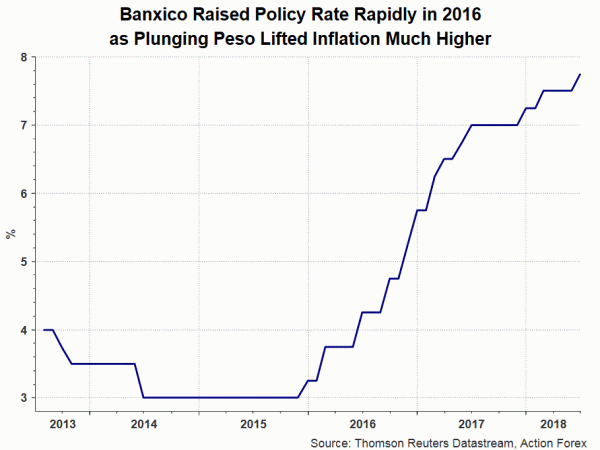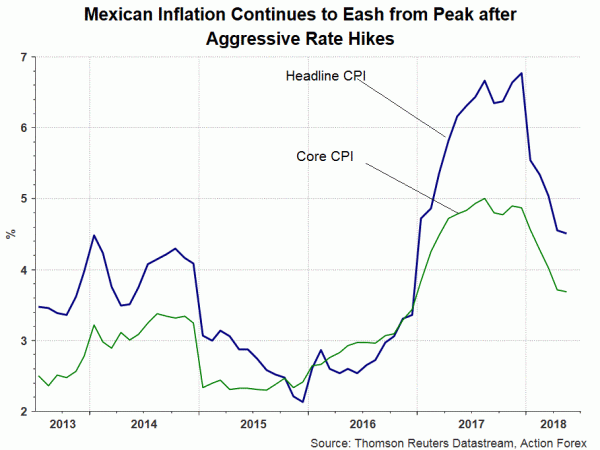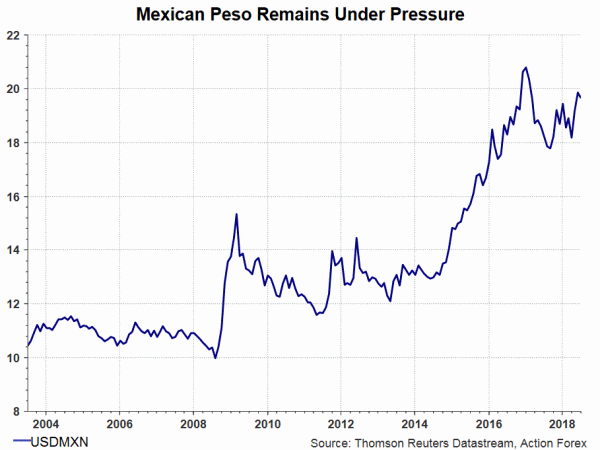Andres Manual Lopex Obrador (a.k.a. AMLO), leader of the leftist National Regeneration Movemen (MORENA), won the presidency with landslide victory at Mexico’s general election held last Sunday. Gaining 53% of the vote, his support is far higher than his major competitor Ricardo Anaya (22.5%) of the National Action Party. The voters also elected over 3 400 political seats at the local, state, and federal level, including 128 Senate seats and 500 seats in the Chamber of Deputies (the lower house). Somehow surprisingly, MORENA and its allies, namely the Social Encounter Party and the Labor Party, took control of the Congress (gaining the majority of seats in both the Senate and the Chamber of Deputies. Opinion polls suggested that the MORENA alliance could control the lower house, but not the senate. There are pros and cons on the country’s economic and political outlook for AMLO’s landslide victory and the alliance’s control of both houses. The high level of support and majority of seats pave a smooth way for the new government to implement its agenda with little barrier. The president would also be able to get approval to his potential nominations in different institutions including members in the Bank of Mexico. On the flip side, if the government seeks to implement radical reforms, it would easily cause drastic consequences, resulting in huge volatility in the financial market. That said, the situation would be under better control as the alliance only secures a simple majority in the congress, as a two-third majority is required for amendment of the constitution which is considered uncertain and negative for the market.
Both MORENA and the Labor Party are left-leaning while the social Encounter Party is on the conservative side. AMLO’s victory is the first time a leftist politician has been elected in Mexico in three decades. Mexico’s ruling parties, be it the rightist National Action Party (PAN) or the leftist Institutional Revolutionary Party (PRI), were centrists. While some commentators view the election outcomes as symptomatic of the global tide of populism, we expect the new coalition government would pursue a pragmatic approach, avoiding further deterioration of economic developments. In his third attempt for the presidency, AMLO has turned more moderate in his election platform. For instance, he has downplayed the opposition to the 2013 landmark energy reform and assured that his government would be fiscally disciplined. Meanwhile, in his victory speech, AMLO also adopted a “conciliatory” tone when describing future relations with the US although predicting “profound change” going forward. He promises deep reform according to the law and respect of the autonomy of the central bank. On the fiscal side, AMLO would adopt more fiscal discipline, cutting government spending and exploring more sources of financing for public investment other than public debt. We expect any policy change would be gradual and transitions take time.
USDMXN fell to a 7-week low of 19.43 before settling at 19.45 Tuesday. We expect the volatility in the aftermath of the election would be short-lived. The more enduring factors affecting Mexican peso remain the underlying economic developments, especially future trade relations with the US (i.e. NAFTA renegotiation). On the momentary policy, the policy rate has increased from post-crisis low of 3% in November 2015 to 7.75% in June 2018. The pace of rate hike is faster than the Fed’s. Note that 250 bps of the rate increase took place in 2016, a year when Mexican peso tumbled -20% against US dollar. The resulting surge in inflation had caused the rapid rate hike by the central bank. We expect the future monetary policy decision by Banxico would still depend on peso’s movement and the Fed’s rate hike path.















